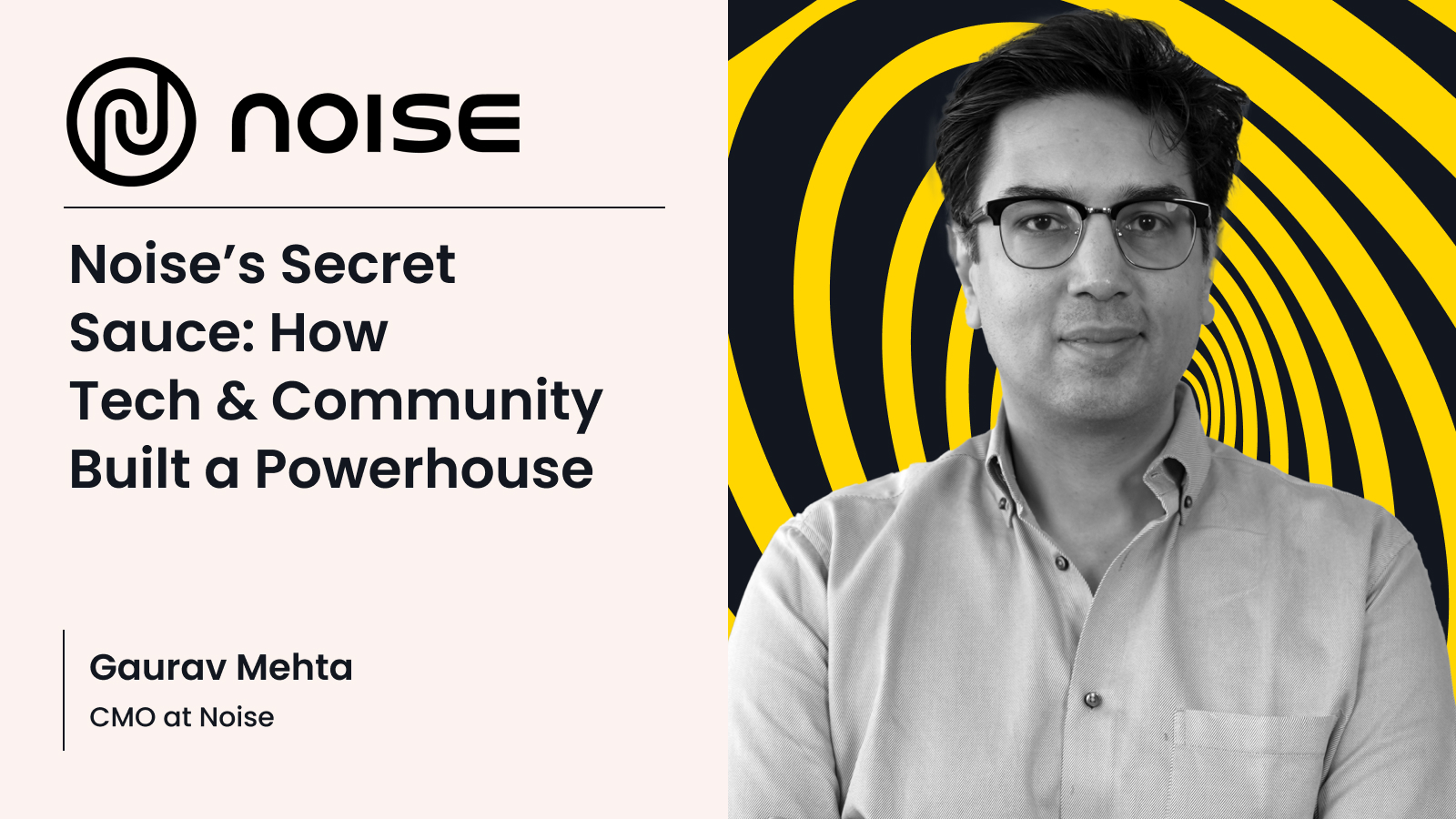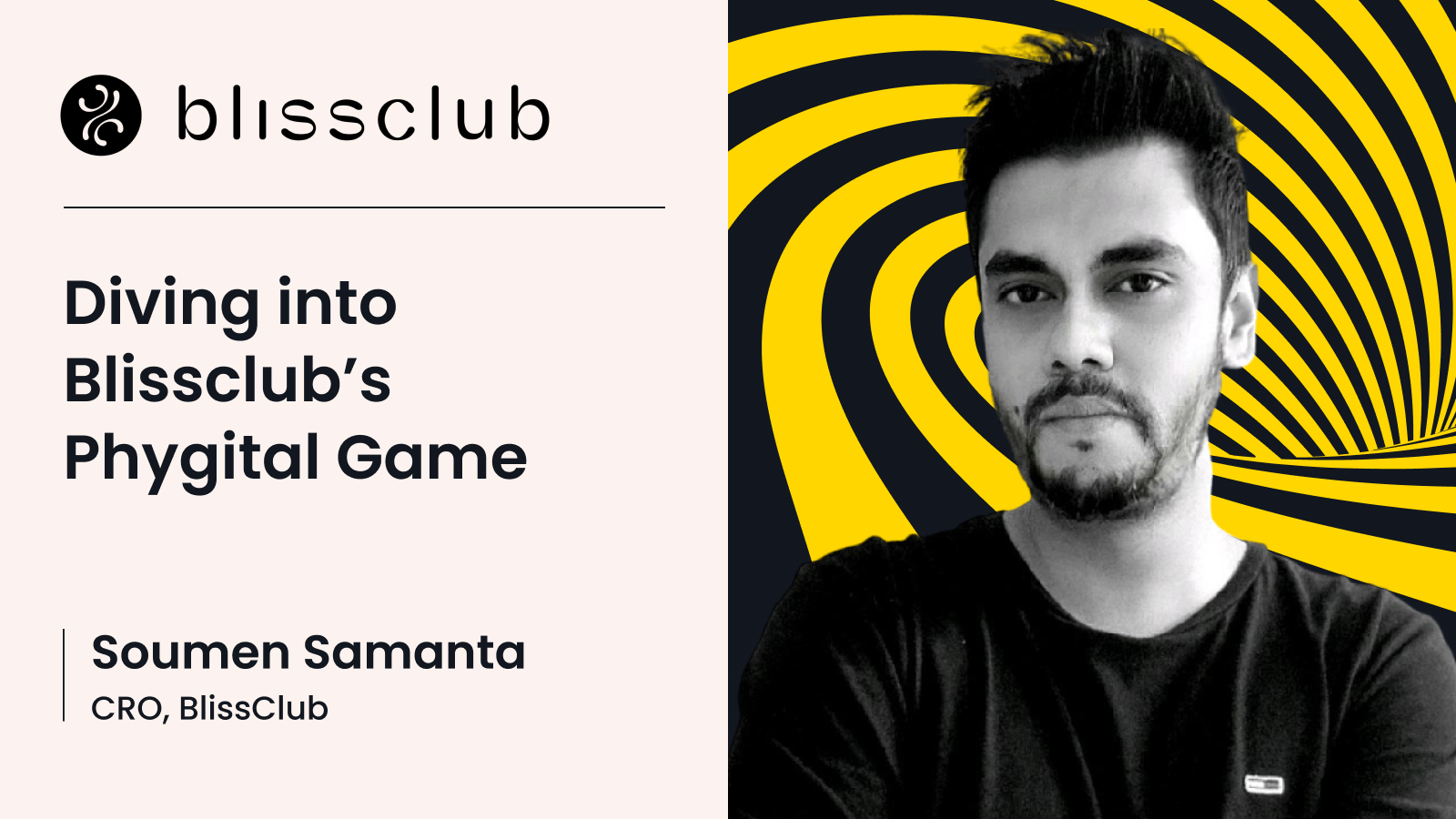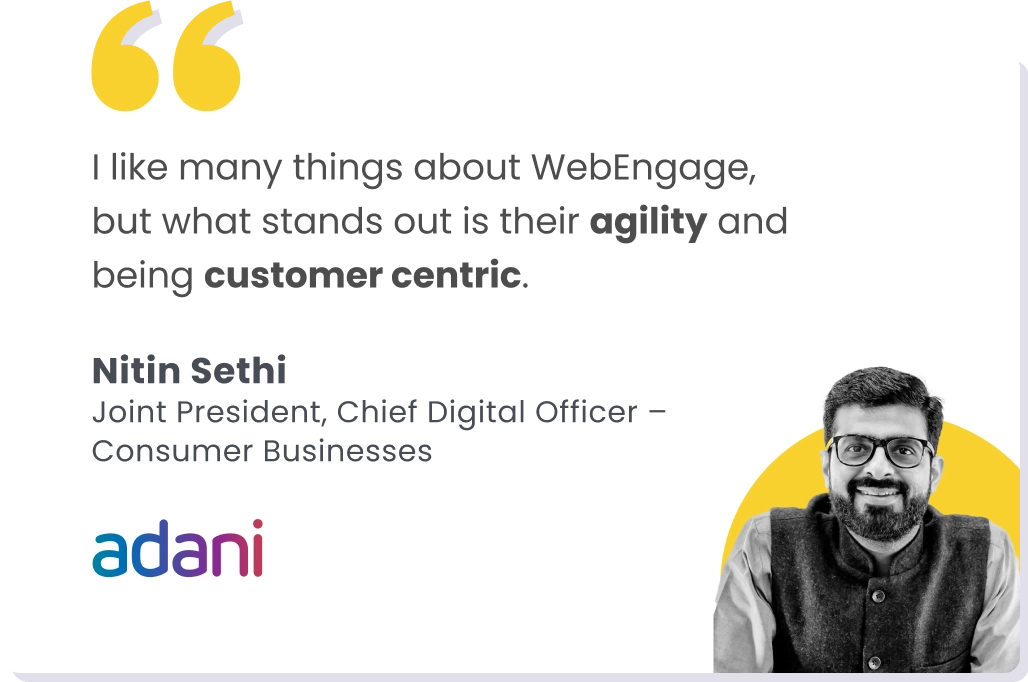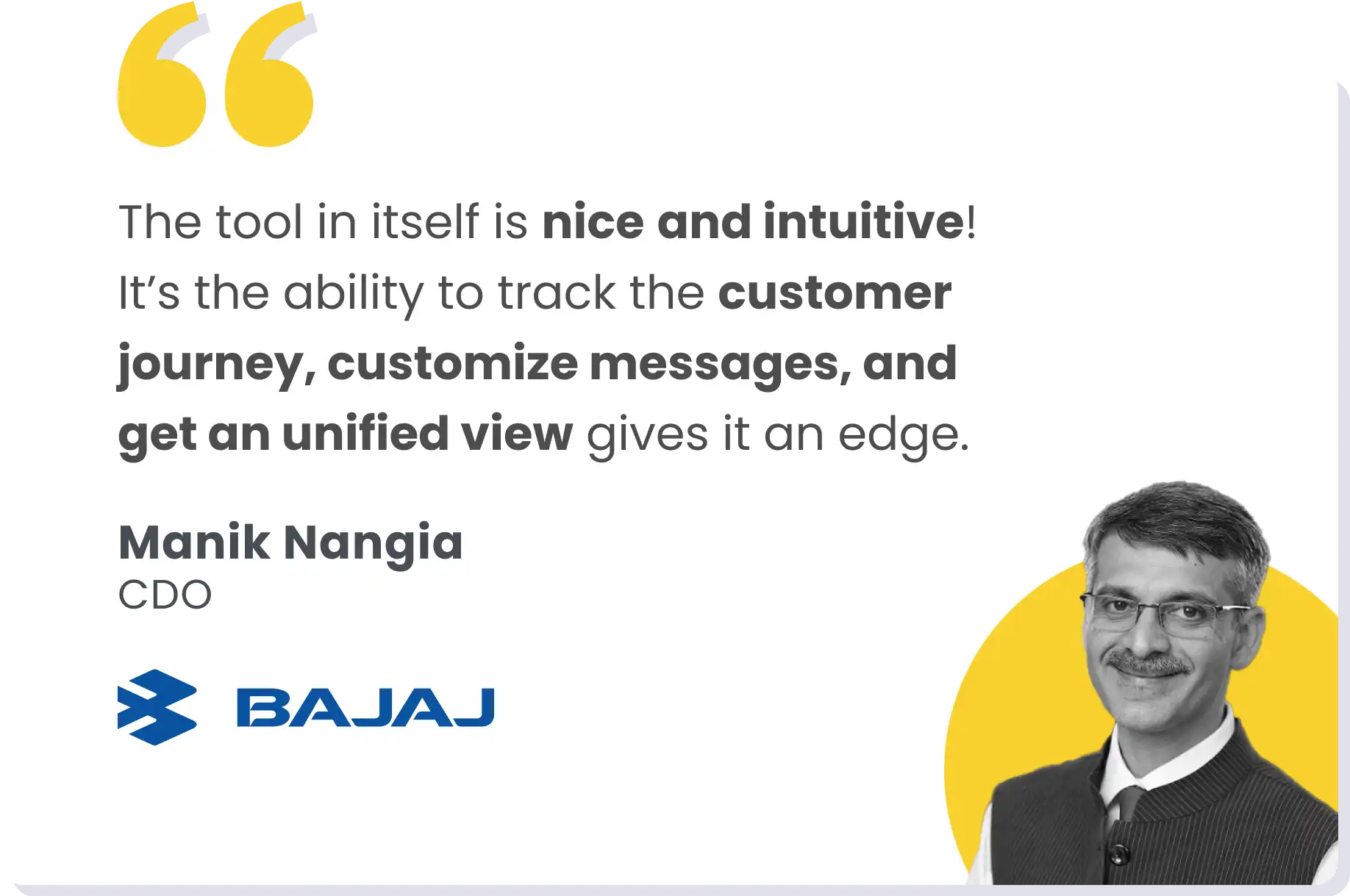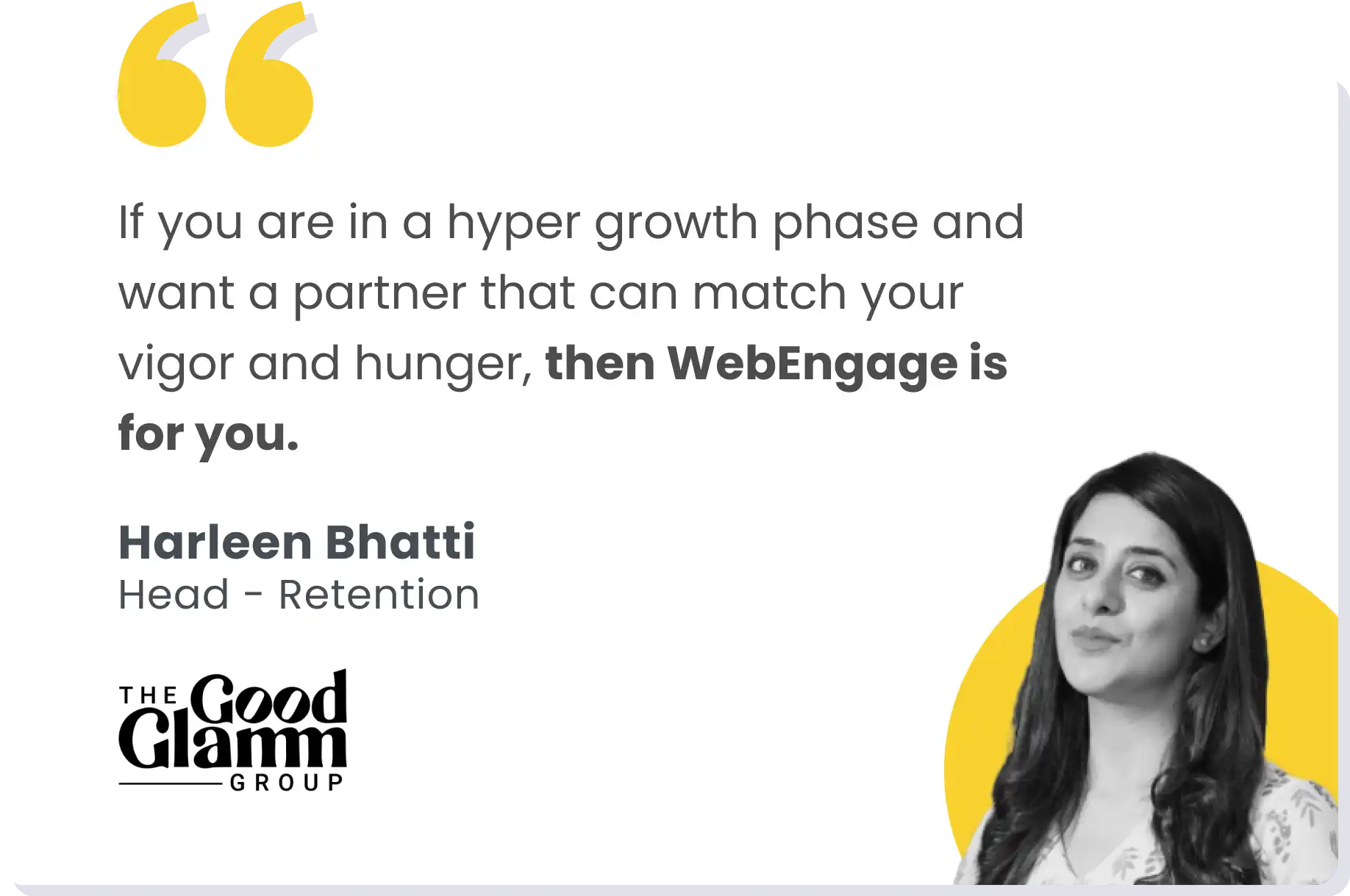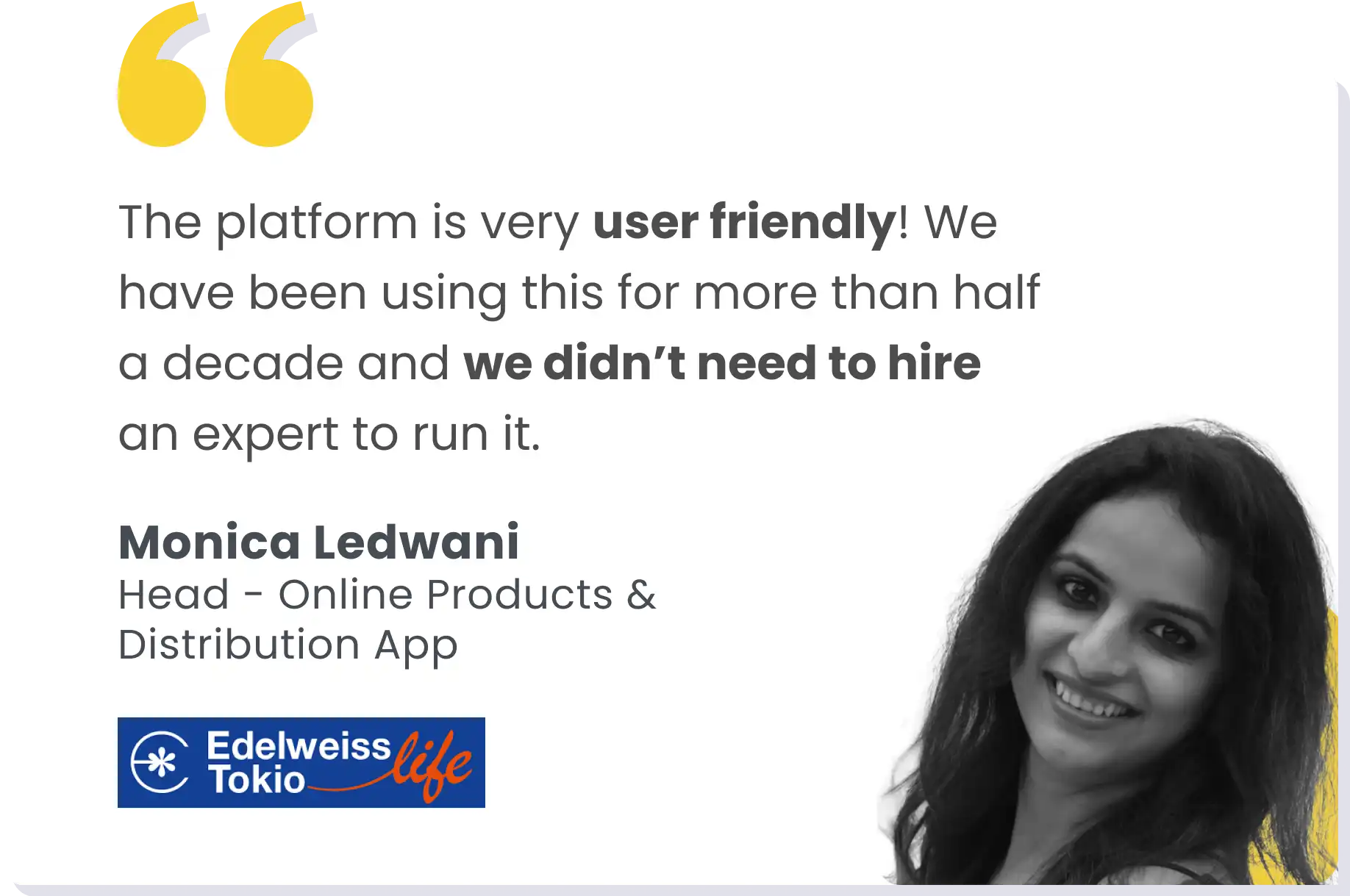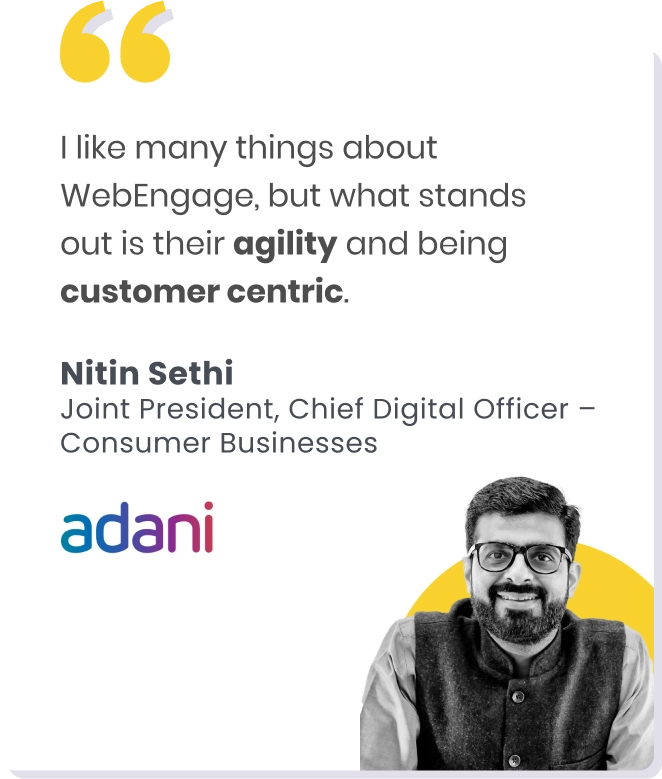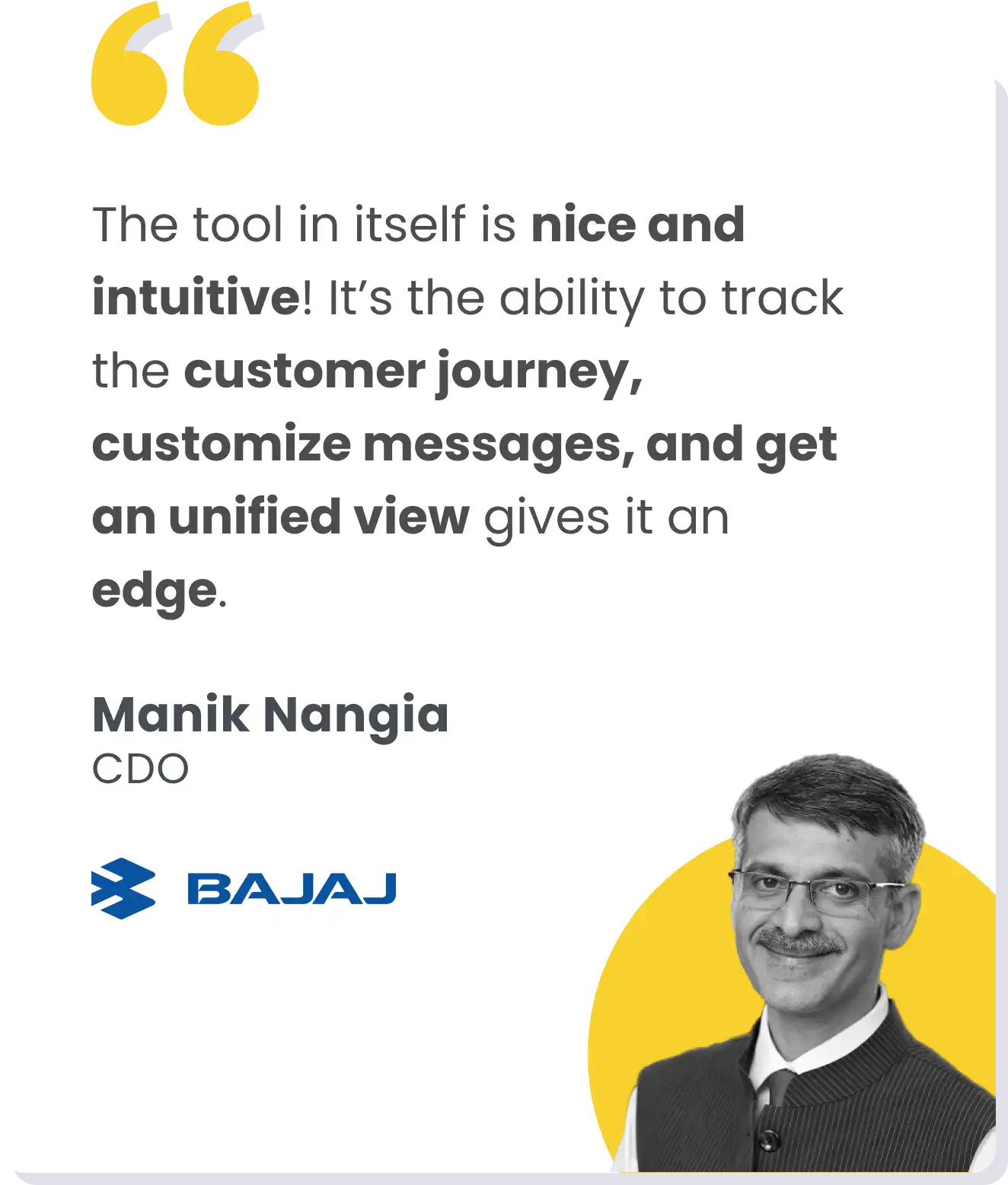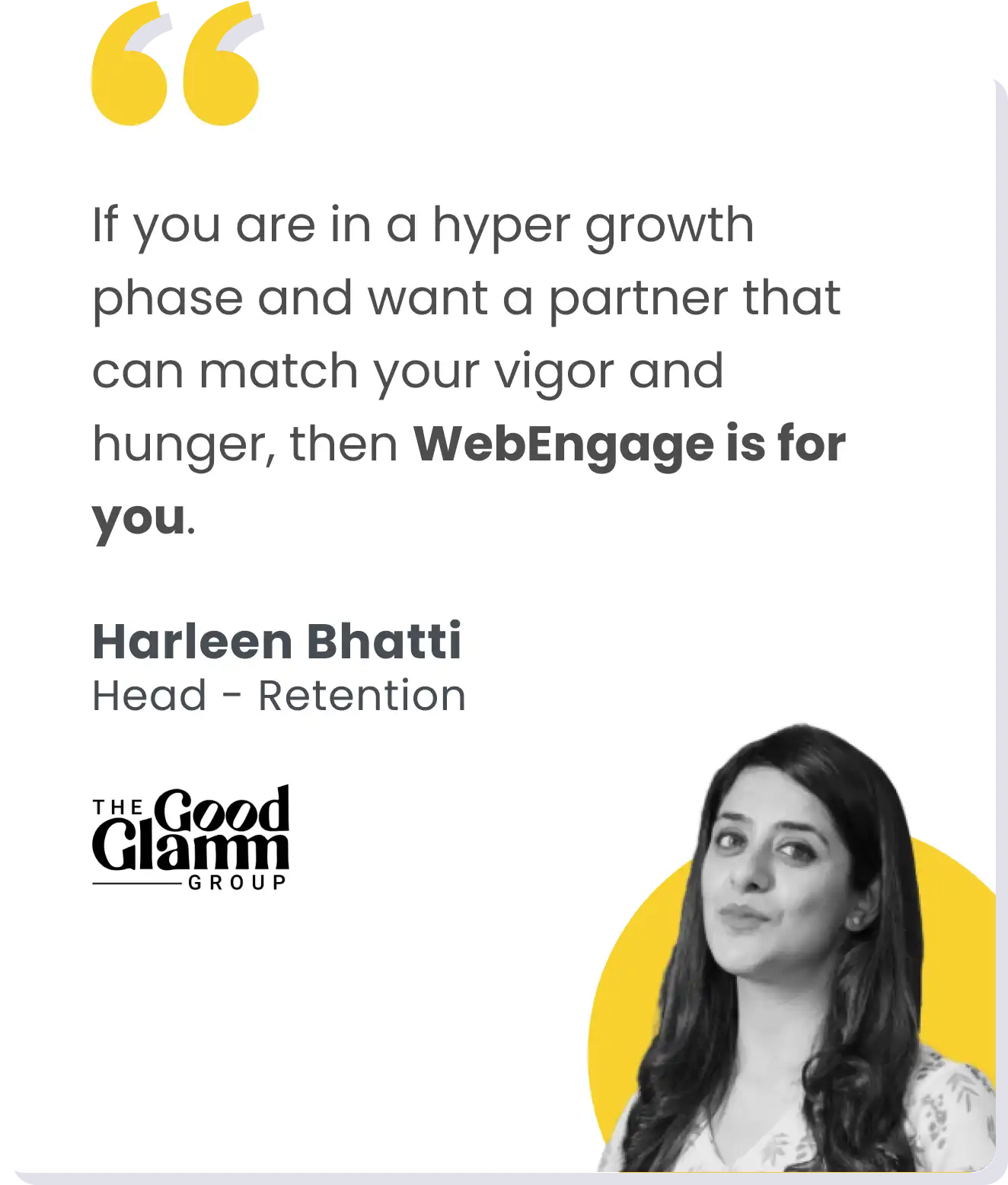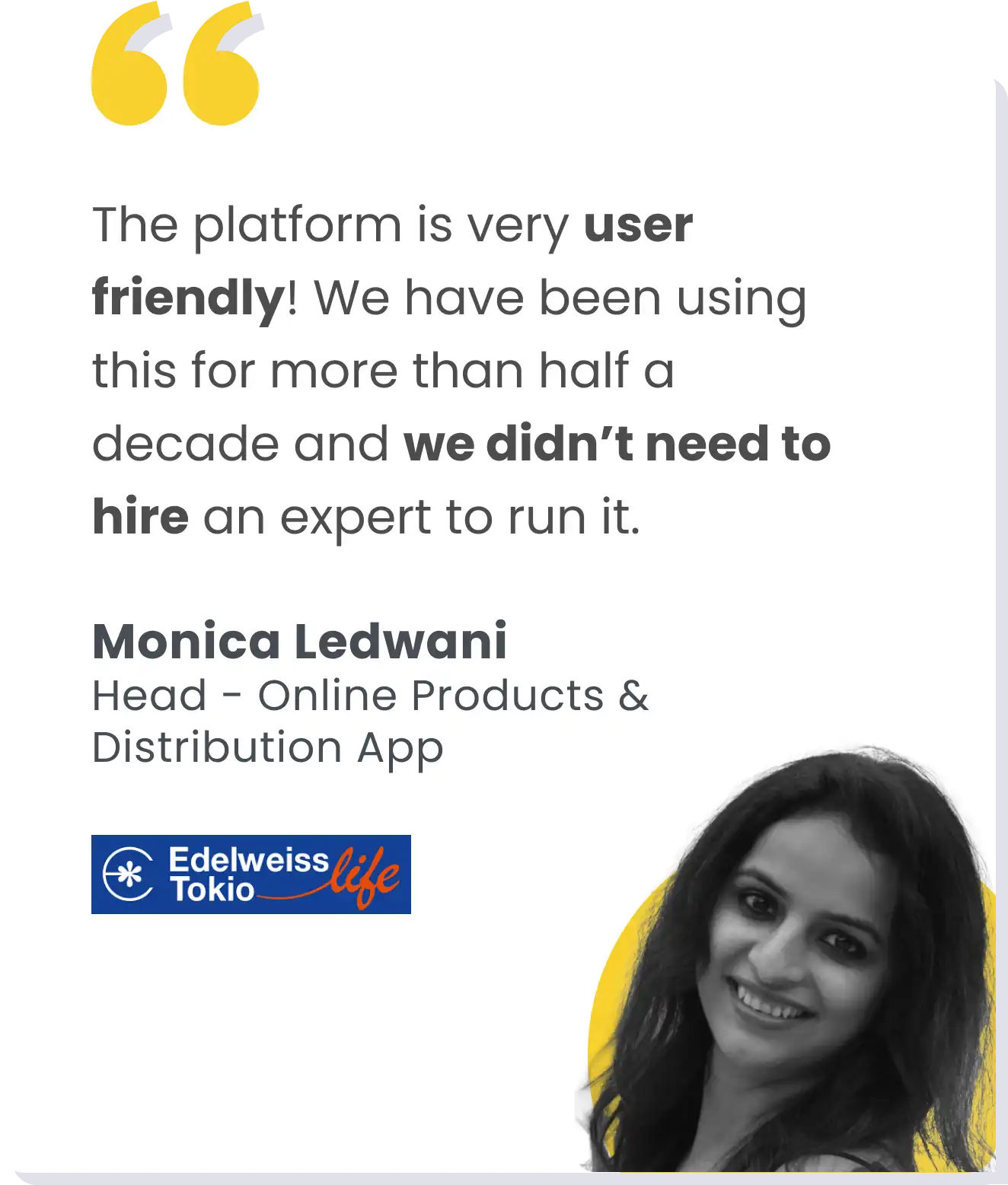To sustain long-term growth and success for your brand, it is imperative that you concentrate on customer retention.
To be able to do this, you need to have a deep understanding of your customer needs, strategically use that data across all your product, marketing, and paid advertising channels, and consistently refine your tactics in real time.
In this episode of the State of Retention podcast, our host Ankur Gattani has a candid conversation with Pranil Shah, Ex-Head of Growth at DailyObjects, to find
out the secrets behind their retention rates and exciting product development that has pushed them to the forefront of the modern lifestyle market.
You’ll love this episode if you’re a brand owner looking for tips for harnessing customer loyalty or a marketer curious about Daily Object’s growth strategies.
Let’s dive into some of the main takeaways from this episode of State of Retention at WebEngage.
Pranil’s Unconventional Career Journey: From CA to VC to Founder to Growth Marketing
Starting out as a gold medalist Chartered Accountant and joining a Big Four firm quickly made him realize that a conventional 9-5 job wasn’t for him.
“I couldn’t resonate with the idea of a conventional job,” Pranil admits.
After realizing this, he discovered project financing, where he researched and analyzed township projects and hospitality, igniting a new interest in understanding business operations and project viability.
But it was his VC experience that ignited his passion for startups, so much so that, along with working at his job, Pranil founded his own startup.
“I was running my startup parallel with my day job, packing orders, setting up marketing campaigns,” Pranil recalls.
This unique journey from CA to VC to founder has lent him a comprehensive know-how of growing a business, from operations to finances, eventually leading him to his current position at DailyObjects.
How Pranil Assessed DailyObjects Before Joining Them
Before joining DailyObjects, Pranil, using his experience in finance and venture capital, detailed the company’s financial health and growth opportunities.
Poring over financial statements, revenue streams, and their overall business model and speaking to the founders and head of growth was pivotal before moving forward.
“I needed to know that DailyObjects had the growth potential,” he says.
If you’re looking to switch jobs, he advises evaluating the market and finding roles that align your core skills with potential employers’ problem statements.
“You need to know what you’re good at and what excites you,” explains Pranil.
He also emphasizes finding companies with a strong founding team, a clear vision, and financial stability.
Strategies, Challenges, and Facilitation: Inside DailyObjects’ Growth Core
“A major part of my role is firefighting,” Pranil shares.
At DailyObjects, growth depends on real-time problem-solving and building a collaborative space.
With extensive strategizing with the founders, Pankaj and Sohil, open communication and agile responses to market conditions ensure a balance between creativity and commerce.
Addressing operational bottlenecks is a crucial one.
“Facilitating seamless communication between different departments is crucial,” Pranil notes.
Beyond Tech: DailyObjects’ Transformation into Modern Lifestyle Essentials
DailyObjects started operations in 2012, initially selling tech accessories like phone cases, evolving to build a catalog of modern lifestyle essentials over the years.
Their philosophy is to create products for modern consumers that, besides being functional, are also aesthetically pleasing.
This transformation is a testament to their ability to adapt and innovate in trying market times.
“We moved from tech accessories to designer bags and wallets,” Pranil explains.
This meant they had to focus on using high-quality materials and developing unique designs with practical functionality that people loved adding to their routines.
“It’s about redefining the brand’s identity to align with contemporary consumer demands,” he adds.
Emotional Commerce: DailyObjects’ Approach to Building Customer Connections
In a time when the average consumer is bombarded with infinite product choices and marketing alerts, building and nurturing an emotional connection is both a challenge and a distinct strength.
DailyObjects has succeeded here by mastering the art of emotional commerce, turning transactional relationships into meaningful, lasting connections.
“We focus on understanding what makes our customers tick,” says Pranil Shah.
This requires identifying factors and cues that evoke positive emotions, such as a sense of belonging or relatability, fanning nostalgia, or celebrating personal achievements.
For example, their collections often feature cultural designs that the urban population enjoys, like cityscapes, art, and pop culture references.
“We want our products to evoke a sense of personal connection,” Pranil explains.
As a result, their customers feel more attached to the brand, seeing their products as expressions of their personality and lifestyle, not just as functional.
The key to this? Storytelling!
“Every product has a story,” Pranil emphasizes, explaining the need to craft products that connect on an emotional level, whether by sharing the inspiration behind a particular design, showcasing the journey of the materials used, or illustrating the story of the artisans who made the products.
Take, for instance, their launch of the Pangaea collection, where they developed stories highlighting the environmental benefits of using recycled materials and the unique craftsmanship that went into creating the products.
“We wanted our customers to feel proud of owning something that contributes to sustainability,” Pranil shares.
A Two-Pronged Approach to Innovation and Retention
They used data-driven insights to initiate product development and marketing tactics to drive both innovations and retain their previous customers.
“We rely heavily on data to identify opportunities for new product launches,” Pranil explains.
This requires gathering data from multiple sources and customer touchpoints like customer reviews, market trends, and sales analytics.
For example, by looking at their sales data, DailyObjects discovered that customers who bought phone accessories were also likely to be interested in matching or complementary tech products.
To cater to this, they developed bundled offers and new product lines. “Data helps us stay ahead of trends and meet customer needs proactively,” Pranil notes.
Additionally, they study heat mapping and customer journeys to optimize their website and app. By noting where their customers are tapping, clicking, lingering, or dropping off/exiting the app, DailyObjects can optimize the user experience across all devices, creating a cohesive brand experience. “Our goal is to make every interaction seamless and satisfying,” Pranil says.
While data studies are important, creativity and design are equally important. The brand also strongly emphasizes aesthetics, functionality, and storytelling.
With creative freedom and experimentation actively encouraged across the team, they could ensure their product portfolio was exactly what their customers wanted.
“We focus on maintaining a balance between aesthetic appeal and usability,” Pranil explains.
This dual approach of customer data and creative product innovation is why DailyObject grew rapidly and became a leader in its niche.
Creating an environment where designers, marketers, and tech experts contributed cohesively to ensure that new potential ideas weren’t forgotten and actively brought to strategic completion.
“This harmony between creativity and commerce sustains long-term growth and customer satisfaction,” Pranil adds.
Unlocking Conversion Potential: DailyObjects’ Segmentation and Personalization Tactics
Let’s get to the meat of their retention strategy: segmentation and personalization, two crucial tactics to succeed in eCommerce with the sheer scale of competition.
Segmentation includes dividing your existing and potential customers into subgroups based on shared characteristics.
DailyObjects recognized that a one-size-fits-all approach is not only a valid tactic but also lazy marketing.
“Segmentation allows us to understand our customers better and cater to their specific needs,” Pranil explains.
Considering criteria like demographics, purchasing behavior, and engagement levels, DailObjects is able to deliver more relevant marketing campaigns, increasing the likelihood of conversion.
For example, the brand routinely looks at its customers, identifies high-value customers who make large purchases, and segments them into VIPs.
The bonus for such users? Exclusive offers, early access to new products, and personalized recommendations!
“By rewarding our best customers, we encourage repeat business and foster loyalty,” Pranil explains.
Additionally, DailyObjects segments its customers based on their browsing behavior on the website and app, tracking what products they view, add to the cart, or order.
Then, they build marketing campaigns that showcase similar or complementary products.
“We aim to make the shopping experience as personalized and seamless as possible,” Pranil says.
To achieve personalization at such a scale, DailyObjects depends on a Customer Data Platform that integrates data from each point, such as a website, app, email campaigns, and social media, and creates a unified view of each customer.
“Our CDP is the backbone of our personalization strategy. With it, we can scale our personalization efforts and ensure that every interaction is relevant and timely,” Pranil explains.
Conclusion
DailyObjects’ journey of growth and innovation is an intriguing, compelling case study on the power of combining data-backed strategies with creativity and commerce.
From Pranil Shah’s interesting career path to the brand’s focus on effective segmentation, this State of Retention podcast offers a wealth of information about retention.
Have a listen here!
And if you’re looking for more conversations and insights on retention with industry experts like Pranil, take a peek at our full podcast collection here!





